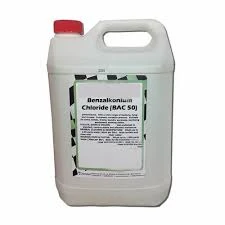cationic pam
Understanding Cationic Polyacrylamide (CPAM) Properties, Applications, and Benefits
Cationic Polyacrylamide (CPAM) is a synthetic polymer that plays a crucial role in various industrial and environmental applications due to its unique properties. As a water-soluble polymer, CPAM is characterized by its positive charge, which enables it to bind effectively with negatively charged particles in solutions. This property makes it incredibly useful in industries including water treatment, paper production, and oil recovery. In this article, we will explore the structure, properties, applications, and benefits of CPAM.
Structure and Properties
Cationic Polyacrylamide consists of acrylamide monomers that have been polymerized and modified to introduce cationic (positively charged) groups. The polymer's molecular weight can vary significantly, influencing its viscosity and performance in different applications. CPAM is known for its high adsorption capacity and ability to flocculate, which means it can gather fine particles together, forming larger aggregates that can be easily removed from solutions.
The positive charge of CPAM interacts with negatively charged particles, including suspended solids, organic matter, and some contaminants, enhancing the sedimentation and filtering processes. Its high solubility in water makes it easy to use in various formulations, allowing for customization based on specific needs within different industries.
Applications
1. Water Treatment One of the most prominent applications of CPAM is in wastewater treatment facilities. It serves as a flocculant that helps in the removal of solids, colloids, and other impurities from water. When added to wastewater, CPAM promotes the aggregation of smaller particles, making it easier to separate them from the liquid phase. This process not only clarifies the water but also reduces the load on filtration systems, leading to more efficient treatment.
2. Paper Industry CPAM is widely utilized in the paper manufacturing process. It acts as a retention aid, helping to retain fibers and fillers during the papermaking process, which directly improves the quality and opacity of the final product. Additionally, CPAM enhances the drainage rate during papermaking, leading to increased production efficiency.
3. Oil Recovery In the petroleum industry, CPAM is utilized in Enhanced Oil Recovery (EOR) applications. It helps to improve the viscosity of the injection water, facilitating the movement of oil through porous rock formations. The polymer's cationic nature allows it to interact effectively with both oil and water, enhancing the extraction process and maximizing oil recovery.
4. Agriculture CPAM also finds application in agriculture, particularly in soil conditioning and erosion control. When applied to soil, the polymer helps to improve water retention, reduce erosion, and enhance the overall structure of the soil, promoting better plant growth.
cationic pam

Benefits
The use of Cationic Polyacrylamide comes with numerous benefits that contribute to its widespread adoption across various fields
- Efficiency CPAM enhances the efficiency of processes like sedimentation and filtration, translating into reduced operational costs in water treatment and other applications.
- Environmental Impact By improving the quality of wastewater discharged into the environment, CPAM plays a vital role in pollution control and maintaining ecological balance.
- Cost-Effectiveness The introduction of CPAM can lead to significant savings in raw materials and energy consumption, particularly in industries like paper and oil production.
- Versatility The ability to customize CPAM formulations makes it suitable for a broad range of applications across different sectors, underscoring its versatility as a polymer.
- Sustainability As industries increasingly focus on sustainable practices, the use of CPAM offers a pathway to reduce waste and improve resource utilization.
Conclusion
Cationic Polyacrylamide is an essential polymer that has carved out a niche in various industries due to its unique properties and functionalities. Its effectiveness in water treatment, paper production, oil recovery, and agriculture highlights its versatility and importance in modern industrial processes. As industries continue to innovate and seek more sustainable options, the role of CPAM is likely to expand, providing efficient solutions to complex challenges while fostering environmental stewardship. With ongoing research and development, the future of Cationic Polyacrylamide appears bright, promising even greater advancements in its applications and benefits.
-
Pbtc Scale InhibitorPBTC: A Scale Protector for Industrial Water TreatmentNewsAug.05,2025
-
Organic Phosphonate: An Efficient Defender in the Field of Scale InhibitionNewsAug.05,2025
-
Hydrolyzed Polymaleic Anhydride: Green Pioneer in Scale Inhibition FieldNewsAug.05,2025
-
PAPEMP Polyamino Polyether Methylene Phosphonic Acid For SaleNewsAug.05,2025
-
Flocculant Water Treatment: A Pioneer in Purification in the Field of Water TreatmentNewsAug.05,2025
-
Benzyl Isothiazolinone: An Efficient and Broad-Spectrum Antibacterial Protective GuardNewsAug.05,2025





